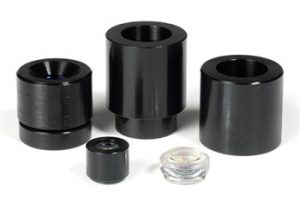High resolution lenses for machine vision — standard and custom lens design
Veterinarians Use Laser Diode Technology To Care For Pets
 High Resolution Lenses for machine vision, instrumentation, inspection and vibration-sensitive applications. Standard and custom hi-res lens assemblies.
High Resolution Lenses for machine vision, instrumentation, inspection and vibration-sensitive applications. Standard and custom hi-res lens assemblies.
Veterinarians have been embracing laser diode technology over the past 20 years as a way to care for pets in their practices; this is the same technology that’s been used for surgeries in humans for decades. The laser (which stands for light amplification by the stimulated emission of radiation) generates and allows the veterinarian to focus an intense beam of light at a specified wavelength toward an injury.
One of the most popular laser diodes being used by veterinarians is the 980nm diode laser. The reason for this is that the laser only impacts the tissue or surgical site at which it is being aimed. This allows physicians and veterinarians to operate with extreme precision with no damage to the tissue surrounding the surgical site. The laser technology is attracted to blood (oxyhemoglobin) and water within the pet’s body.
The most popular uses by veterinarians for this technology are for:
- Removal of canine and feline dewclaws
- Wound disinfection
- Ear cropping
- Biopsy and tumor removal
- Urinary and bladder procedures
- Many others
A laser provides for quick coagulation, which allows the surgeon to operate in an almost bloodless surgical field. In small animals such as reptiles, birds or other small mammals, the advantage of a laser diode device is because of the diminished amount of blood loss they will suffer during a procedure. The laser seals the animals’ nerve endings during the process and this helps relieve discomfort, pain and swelling following the surgery and this leads to a more speedy recovery.
It’s possible that your veterinarian may charge an additional fee for surgical procedures performed with the laser diode, it is a cost most pet owners will happily bear if it will help the pet’s recovery.